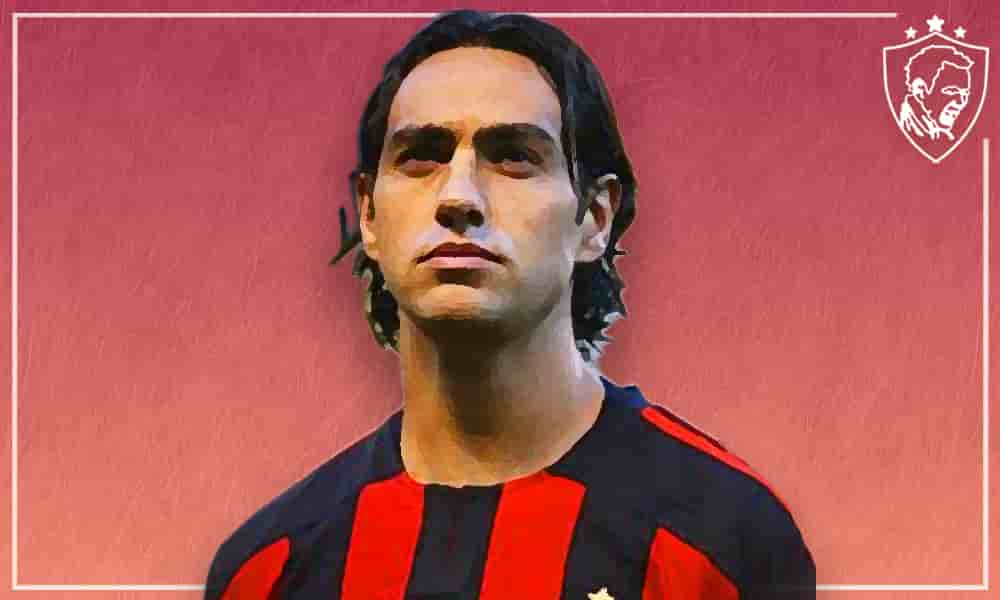I could use a plethora of words to describe how good I think this guy was – but we’ll stick with ‘stylish’ for now. It’s clean.
When it comes to the art of ‘attack stopping’, before we explore Alessandro Nesta’s approach, here’s what you should know. Defending isn’t always about crunching tackles and powerful shoulder-to-shoulder exchanges, instead, defending can (as demonstrated by the Italians over the years) be a very elegant display.
And the thing is, it kind of had to be a tweaked system to the norm given the stature of Serie A football at the time – as a young Alessandro Nesta was to discover when breaking through the Lazio ranks in the mid-to-late ’90s.
To name a few attackers during this period: Gabriel Batistuta‘s left foot was on a country-wide ‘Wanted’ list, Alessandro Del Piero had formed an unhealthy addiction to making goalkeepers cry, Zinedine Zidane‘s balding scalp became a blinding reflection to those who dared stand before him, and Ronaldo … was just Ronaldo!
The Brazilian was quickly becoming considered the best striker ever by this point, by the way!
Under their influence, Serie A was arguably the best league in world football; and it would take something as daring and ground-breaking as the newly formed Premier League to shift the balance of power away from Italy’s boot.
Until that point, their incumbent defensive presence had to contend with the fact that they were coming up against some of the most talented and broadly competent forwards in world football. And for those like Alessandro Nesta (who was only earning his stripes before making some headway in Sky Blue), it meant matching their style.
So that, when the opposition is attacking, you don’t chase the ball like a headless chicken to either attempt to take it or concede a foul. Mirroring those in control of the ball, those opposing them had to be equally as composed.
We would call them today as your ‘Rolls Royce’ type of defender. Like Virgil Van Dijk, for example.
I know what you are thinking, a defender who is being described as having ‘elegance‘ and ‘composure‘ was surely bullied when it comes down to it; but that wasn’t the case with Alessandro Nesta.
His strength and speed only complimented his innate awareness (and overwhelming maturity for somebody so young), which made him as complete a defender as they come. His pace and technical ability meant he could stand up with the best strikers of his generation and more often than not come away unscathed.
He also had the ability to play a pass that any midfielder would be proud of.
And having been so successful, it’s no wonder that his time with Lazio became limited – leading to AC Milan’s interest in 2002 (accelerated by their comparative wealth to Lazio, and the Rome club’s ailing bank balance).
€30million later, and the great Rossoneri were able to eventually form a defence which would go down in the history books for all the right reasons.
Battling for starting places at Milan alongside Alessandro Nesta were: Paolo Maldini, Cafu, Alessandro Costacurta and Jaap Stam – the stuff that dreams are made of! It’s no wonder then, that A.C. Milan were soon able to re-conquer Europe and earn Nesta his first Champions League title in 2007.
Unfortunately for Nesta, injuries were to hinder his club and international career – even keeping him out of the knockout stages and final of Italy’s 2006 World Cup Triumph; but that said his trophy cabinet was by no means empty upon retirement in 2015 (following a very short spell in the Indian Super League … which is probably best forgotten).
All in all, Nesta’s legacy enables him to sit in an elite group of greats – and means we will probably speak about him more in the years to come. He’s even gone and copped himself a cheeky little FIFA ‘Icon’ Card in their ‘Ultimate Team‘ mode – and I can’t think of many more deserving of that than Alessandro Nesta.

Pingback: The Legendary Maldini Dynasty at A.C. Milan (1954-) - Ultra UTD.